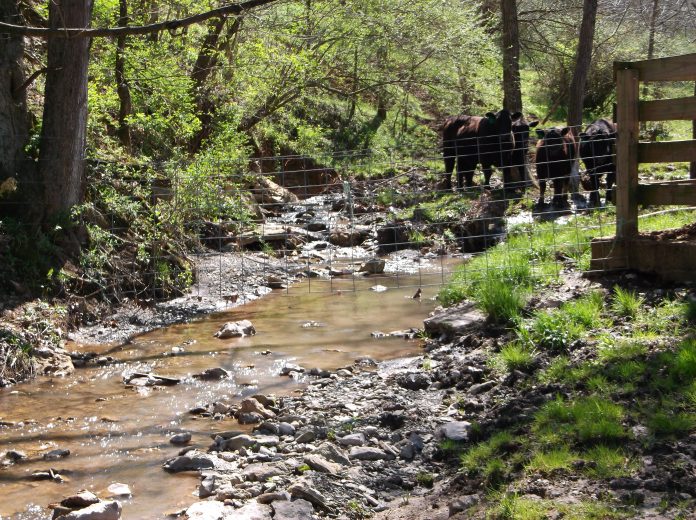The healthy stream is always changing, adjusting its path through the valley. It seems that the stream holds a high preference for changing course to flow into the best field on the farm.
This wandering disposition is intrinsic to the stream, who meanders its way through life, in a constant state of change. On occasion, the actions of man intervene, deciding in our wisdom that we know better than the stream where it should go.
In years gone by, the owner of nearly every farm endeavored to correct the wayward path of the stream. At the expense of his clock, his back and his wallet, the stream was straightened into a ditch.
But when given time and left to its own, the stream reveals that it was never convinced to give up on its changing nature, and slowly begins to wander once again.
Time has shown us that healthy streams tend toward this meandering path, always changing their course. But at times our influence on the stream pushes it too far and meandering becomes collapsing and eroding.
Intervention
This influence may come from a wide range of decisions up or downstream of the affected area. Whether caused by excessive stormwater, inadequate buffers, ditching or other flow alterations, these situations may necessitate intervention.
But now, rather than working against the nature of the stream, we can work with it. Options abound for ways to repair or protect the stream.
Planting trees into the streambank and on the adjacent areas slow down water and hold soils in place to reduce runoff and erosion.
Woody debris or natural rock can be installed in specific locations to armor banks without the detrimental effects of riprap. Two-stage channels serve as a compromise when it’s too hazardous to eliminate the ditch bank, but give some space for more natural flow conditions.
In the most severe cases, natural channel design provides an option to re-engineer the channel from scratch and put it back, leaving room for the stream to wader and develop.
Like the stream, our lives are full of change. Sometimes we hopefully await the change, ready for something new. In other seasons, we may dig in our heels, resisting what is coming.
Changes
Agriculture is in the midst of many potential changes now. Discussions about these changes are happening all around us whether at the local, state, national, or global scale.
Ohio, in particular, is delving into how the state and the agriculture industry is going to handle nutrient issues.
These debates need input from all of us: producers and consumers, legislators and constituents, conservationist and cooperators.
Change can bring challenges, but as agriculture continues to change, consider the impact stronger conservation has on the industry. No one wants nutrients and soil leaving the farm and entering the stream (whether for economic or ecologic reasons), but an honest analysis would tell us we can all do better at protecting our resources.
The future of our farms and ecosystems both depend on it. So take a look around and prepare for the next bend in the stream.













